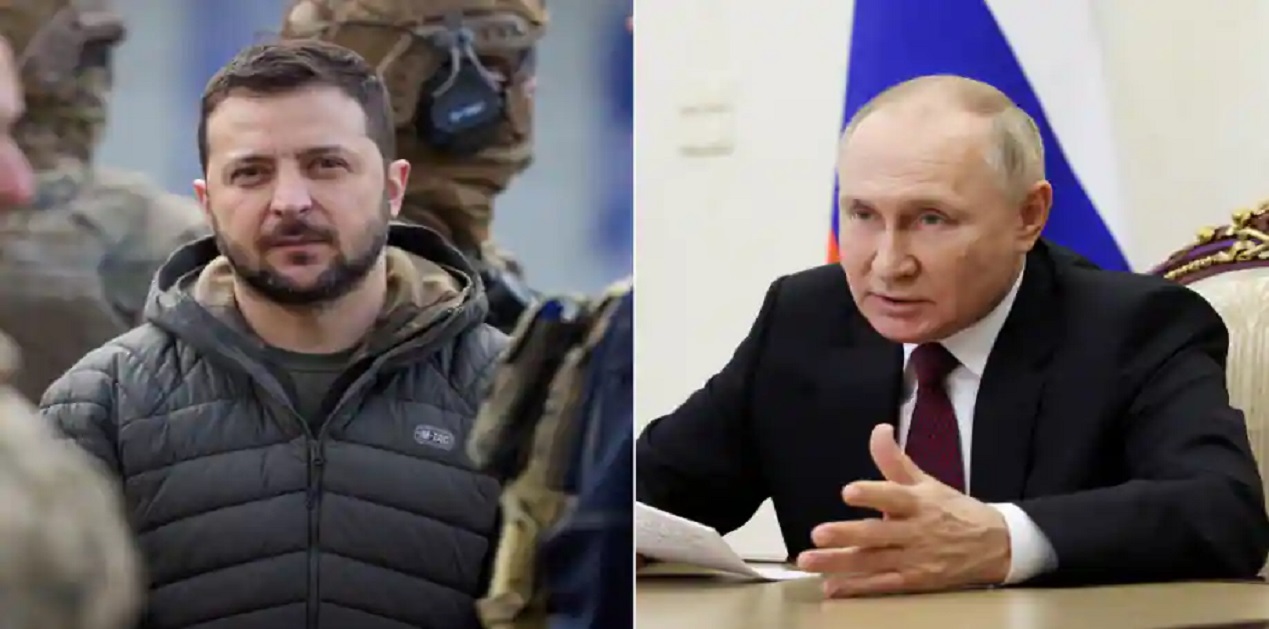The Year 2022 saw the organizing principles of the international system become more fragmented even with facade of multilateral summitry. Despite US unipolar moment receding, China’s ascendancy has yet to translate into US decline. With absence of efficient balancing and weak multilateralism, the return of multipolarity today has been characterized by diffusion of dangers amidst growing interdependence among partners. Against the backdrop of resource scarcity and rising inflation, the vitiated channels of diplomacy and lack of accommodative ethics have increased entropy in the international system. As states foster alliances and partnerships to seek economic growth or even military cooperation, they also entrap member countries in support of the decisions of another member state especially when the decision is going to war. However, there also exist factors that mitigate multipolar instability such as the dynamism of numerous middle powers that have strong status quo inclinations and reaffirm search for a rules based order. Presence of fluid coalition commitments has spurned new and more flexible groupings from Quad and AUKUS to China-Russia alliance and OPEC plus solidarity. However, the need to arrest the decline of multilateralism through reform of United Nations and Bretton Woods Institutions has also assumed greater attention after being hamstrung for decades.
Starting in February 2022, the Russia-Ukraine war even now has shown no signs of abating as both sides seek to pursue and consolidate gains on the battlefield to strengthen their negotiating hand. With unprecedented assistance poured in by the US, Ukraine has put up an exceptional fight. The war has shown both the return of conventional war as well as the arrival of new technologies in warfare such as drones, precision attacks, space capabilities etc. Even as the European Union withdrew certain sanctions on fertilizer trade towards end of 2022, the announcement of the ninth package of sanctions raises doubts on change of strategy by Europe in dealing with the long-drawn quagmire. Supply chain disruptions, food and energy insecurity, increased costs of logistics, volatile financial markets, currency fluctuations, etc. caused with Russia-Ukraine conflict and the western sanctions continue to disproportionately impact the Global South. For Russia, intermittent military reversals have spiked criticism against President Putin despite domestic support for the war. The US mid-term elections in November 2022 have brought forth a Republican-led House and Democrats-dominated Senate. This may prompt more bipartisan division and gridlock in 2023 as Republicans aim to start new investigations into President Biden and his family. Whether this will distract or promote accommodation in foreign policy remains to be seen.
As the transatlantic alliance strengthened in 2022, concerns have risen on the strategic autonomy of Europe and the ability of the United States to take on both China and Russia despite official US articulations. Ironically, practically identical views on international issues have led to the strengthening of China-Russia bilateral ties. The Feb 04 Xi-Putin Summit in 2022 was probably the first time that analysts saw the relationship as more than tactical opportunism. Though China and Russia seem to be very aware of each other’s vulnerabilities and sensitivities, the consequent Ukraine war has brought forth new dynamics as well as limitations of the alleged no-limits partnership. For Russia, relationship with India has gained new salience as India continues to remain one of the few bright spots to diversify from breakdown of relations with the west and survive the Chinese embrace. Meanwhile, high energy prices and rising inflation have escalated political turmoil beyond just Global South into even Global North countries. The climate alarmism along with declining investments into fossil fuels have already increased mismatch between supply and demand. Disruptions caused by Ukraine war have impacted at the very movement of global energy. In coming time, India will have to seriously revisit its energy security policies and energy transition ambitions.
The Indo-Pacific has been the most cohesive and coherent effort in recent time in reinforcing a rules-based order as the world transitions to multipolarity. The Indo-Pacific and Quad have evolved rapidly in the last two years under Biden administration. The Quad Leaders’ in-person Summit in May 2022 saw an expansion of the Quad agenda and the setting up of multiple Quad working groups. The Quad has definitely opened a larger strategic space for India by improving conversation with the west. Prime Minister Modi’s participation in the G7 Summit in June 2022 showed an expanded set of expectations, along with increased scrutinizing of India’s policy choices. But the dilemmas remain. Despite strong progress, the India-US relationship continues to face intermittent hiccups on Pakistan, human rights, ideological hang-ups, Russia etc. Shinzo Abe’s assassination in July was a big loss for India-Japan relations. However, it has also brought increased volatility in Japan’s domestic politics with the Unification Church scandal and declining ratings for PM Kishida. Yet, increasing securitization of Japan’s strategic policies may not be impacted from this domestic upheaval.
Increased blacklisting of Chinese tech firms, new legislations like Chips and Science Act 2022, audit dispute regarding US-listed Chinese companies, and continuation of trade tariffs by Biden administration have put major pressure on China. But Taiwan has emerged as the most contentious issue between the US and China. After US House Speaker Nancy Pelosi’s visit to Taiwan in August, the massive military exercises post her visit showed a radically different China and the PLA in comparison to the Third Taiwan Straits Crisis. Extent of US’ military commitment to Taiwan may be deterministic in defining China’s approach to Taiwan. The 14th National People's Congress in early March 2023 will see new Chinese leadership assume office as Xi Jinping starts a third term. Since the 19th Party Congress, Xi has had to face numerous crises one after the other. This has led to a turnaround in reform overdrive with outreach to the private sector including state support for the real estate sector. There has also been an abrupt ending of zero-Covid policy as crippling economic slowdown and inability to find new engines of growth, have led to sudden accommodative rhetoric in Chinese foreign policy. China has sought to shore up ties in Middle East, Central Asia, Southeast Asia, Africa, and Europe with both outgoing trips by Xi Jinping and incoming visits by numerous state leaders.
Though Wang Yi’s and Dr Jaishankar held talks twice in 2022 (in New Delhi and Bali), the situation is far from usual in India-China bilateral ties despite Chinese narratives of return to normalcy. Chinese military incursion into Tawang on Dec 09 shows a China that seeks to achieve a fait accompli of its desired borders with India. After his power consolidation in the 20th Party Congress, it is likely Xi Jinping will remain the leader in charge of external policies, including relations with India. Xi became primary interlocutor when PM Modi assumed office in India. Trend towards tactical concessions to India without substantive accommodation of its interests, concerns, and aspirations is likely to continue. There has to be more agile management of relations with China as threat of bottom-steered escalation (if not top-led conflict) with military feints gone awry remains very high. The promotion of Western Theatre Command generals in Central Military Commission bears need for more study. For India, expanding its deterrence capabilities against China has assumed urgency. Further, capability building has to be expedited with a vengeance. 2022 saw the third winter deployment of Indian soldiers in very high-altitude areas. With India assuming G20 and SCO Presidencies in 2023, it can be expected that despite bilateral silence, India will engage China in multilateral forums such as the G20, SCO, BRICS, etc. in the coming time.
The upcoming global recession needs to be viewed as not just a cyclical development but as one bringing forth many structural changes. The specter of recession continues to hang on the US economy despite unprecedented rate hikes with record white collar layoffs being seen for the first time. Same can be said of Europe. In the case of South Asia, the turbulent geoeconomics has increased economic challenges prompting questions on political stability of many countries. Despite reopening of the Indian embassy, Afghanistan remains a conundrum for Indian security. In 2022, Sri Lanka saw both economic and political collapse, Myanmar and Pakistan remained mired in their political abyss with Bangladesh and Bhutan escaping fiscal crisis with dent of sheer luck. The Middle East continued with its strategic rapprochement in 2022 after decades of instability, unending hostilities, insurgencies, terrorism and war. Of course, disputes remain, but leaders of the region seem eager to paper over many of their differences and look for areas of mutual interest as US withdrawal prompts realignments. For India, managing good ties with both sides of the Gulf remains a driving principle. The strengthening of the OPEC+ will have to be watched as it has bearing on India’s energy security.
High-level visits continued between India and Africa. More cooperation will have to be sought with African and Latin American partners in mitigating India’s large rare-earths dependency.
Despite varying assumptions on extent of India’s linkages with global economy, policymakers need to account that recession in developed economies and geopolitical uncertainty does impact Indian economic growth. It has already impacted employment, slowed export growth, and exerted pressure on the fiscal and current account deficits and on the exchange and inflation rates. India requires a medium-term plan that integrates economic and foreign policy to stabilize the economy and shape expectations of investors. It is also important to articulate a well thought out EXIM policy (that has been postponed since 2019). Our positions on various issues in the ongoing free trading agreements and WTO reform negotiations (such as on environment, labor, digital trade etc.) need synchronization. There are opportunities emerging from slowdown in China and strategic compulsions that are forcing west to decouple from China. There is also greater western support for India’s strategic positions. India needs to capitalize on this by welcoming new investment and increasing its share of manufacturing and services trade in coming time.
(The paper is the author’s individual scholastic articulation. The author certifies that the article/paper is original in content, unpublished and it has not been submitted for publication/web upload elsewhere, and that the facts and figures quoted are duly referenced, as needed, and are believed to be correct). (The paper does not necessarily represent the organisational stance... More >>
Image Source: shorturl.at/FKR46











Post new comment